
Mars Reconnaissance Orbiter arrives at Mars on March 10, 2006
Mars Reconnaissance Orbiter arrives at Mars: NASA's Mars Reconnaissance Orbiter arrived at Mars on March 10, 2006.
Over the past decade, the mission has shown how dynamic Mars remains today, as well as how diverse its past environmental conditions have been.
Here are some of the highlights of the last 11 years:
• Mars Reconnaissance Orbiter has completed 51,000 orbits.
• Mars Reconnaissance Orbiter has returned 307 terabits of total science data to Earth - more than all other interplanetary missions combined, past and present.
• Mars Reconnaissance Orbiter has imaged 2 landed missions during their final descent.
• Mars Reconnaissance Orbiter has taken more than 290,000 images.
• Mars Reconnaissance Orbiter has scouted landing sites for 7 Mars missions.
NASA / Wikipedia / Encyclopedia Britannica / Space.com
/ Mars Reconnaissance Orbiter arrives at Mars on March 10, 2006 (YouTube) 

World War II: Firebombing of Tokyo on March 09 - 10, 1945
World War II: Firebombing of Tokyo: On this day, U.S. warplanes launch a new bombing offensive against Japan, dropping 2,000 tons of incendiary bombs on Tokyo over the course of the next 48 hours. Almost 16 square miles in and around the Japanese capital were incinerated, and between 80,000 and 130,000 Japanese civilians were killed in the worst single firestorm in recorded history.
Early on March 9, Air Force crews met on the Mariana Islands of Tinian and Saipan for a military briefing. They were planning a low-level bombing attack on Tokyo that would begin that evening, but with a twist: Their planes would be stripped of all guns except for the tail turret. The decrease in weight would increase the speed of each Superfortress bomber-and would also increase its bomb load capacity by 65 percent, making each plane able to carry more than seven tons.
Speed would be crucial, and the crews were warned that if they were shot down, all haste was to be made for the water, which would increase their chances of being picked up by American rescue crews. Should they land within Japanese territory, they could only expect the very worst treatment by civilians, as the mission that night was going to entail the deaths of tens of thousands of those very same civilians. “You’re going to deliver the biggest firecracker the Japanese have ever seen”, said U.S. Gen. Curtis LeMay.
The cluster bombing of the downtown Tokyo suburb of Shitamachi had been approved only a few hours earlier. Shitamachi was composed of roughly 750,000 people living in cramped quarters in wooden-frame buildings. Setting ablaze this “paper city” was a kind of experiment in the effects of firebombing; it would also destroy the light industries, called “shadow factories,” that produced prefabricated war materials destined for Japanese aircraft factories.
The denizens of Shitamachi never had a chance of defending themselves. Their fire brigades were hopelessly undermanned, poorly trained, and poorly equipped. At 5:34 p.m., Superfortress B-29 bombers took off from Saipan and Tinian, reaching their target at 12:15 a.m. on March 10. Three hundred and thirty-four bombers, flying at a mere 500 feet, dropped their loads, creating a giant bonfire fanned by 30-knot winds that helped raze Shitamachi and spread the flames throughout Tokyo.
Masses of panicked and terrified Japanese civilians scrambled to escape the inferno, most unsuccessfully. The human carnage was so great that the blood-red mists and stench of burning flesh that wafted up sickened the bomber pilots, forcing them to grab oxygen masks to keep from vomiting.
The raid lasted slightly longer than three hours. “In the black Sumida River, countless bodies were floating, clothed bodies, naked bodies, all black as charcoal. It was unreal”, recorded one doctor at the scene. Only 243 American airmen were lost-considered acceptable losses.
History Channel / Wikipedia / Encyclopedia Britannica / The Japan Times
/ World War II: Firebombing of Tokyo on March 09 - 10, 1945 (YouTube) 
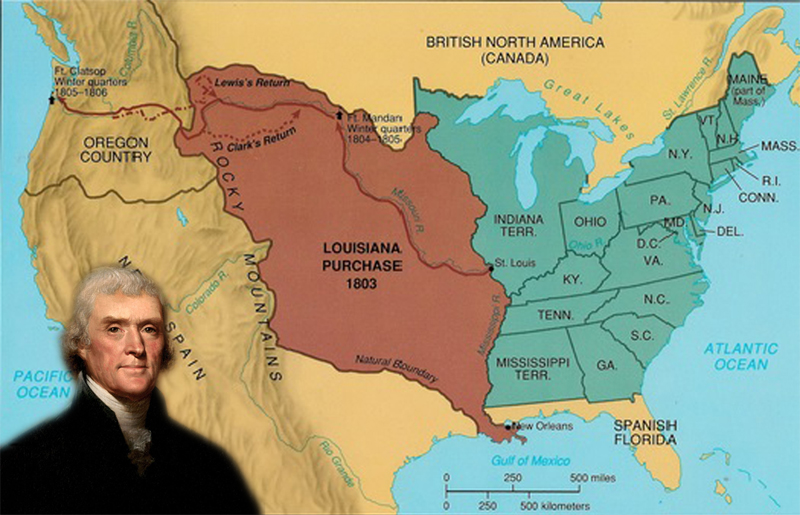
Louisiana Purchase: Formal transfer ownership of the Louisiana Territory from France to the United States on March 10, 1804
Louisiana Purchase: Formal ownership of the Louisiana Territory from France to the United States: On March 10, 1804 - formal ceremony is conducted to transfer ownership of the Louisiana Territory.
France was slow in taking control of Louisiana, but in 1802 Spanish authorities, apparently acting under French orders, revoked a U.S.-Spanish treaty that granted Americans the right to store goods in New Orleans.
In response, Jefferson sent future U.S. president James Monroe to Paris to aid Livingston in the New Orleans purchase talks. In mid-April 1803, shortly before Monroe’s arrival, the French asked a surprised Livingston if the United States was interested in purchasing all of Louisiana Territory.
It’s believed that the failure of France to put down a slave revolution in Haiti, the impending war with Great Britain and probable British naval blockade of France - combined with French economic difficulties - may have prompted Napoleon to offer Louisiana for sale to the United States.
Negotiations moved swiftly, and at the end of April the U.S. envoys agreed to pay $11,250,000 and assume claims of American citizens against France in the amount of $3,750,000. In exchange, the United States acquired the vast domain of Louisiana Territory, some 828,000 square miles of land.
The treaty was dated April 30 and signed on May 2. In October, the U.S. Senate ratified the purchase, and in December 1803 France transferred authority over the region to the United States.
History Channel / Wikipedia / Encyclopedia Britannica / Library of Congress
/ Louisiana Purchase: Formal ceremony is conducted to transfer ownership of the Louisiana Territory from France to the United States on March 10, 1804 (YouTube) 
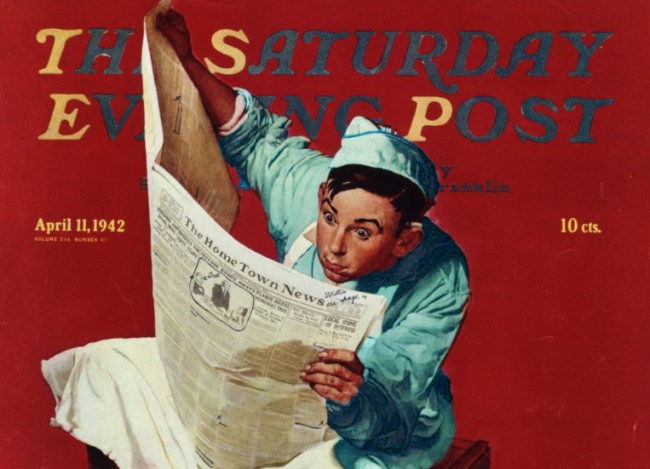
Understanding Military Terminology - Movement requirement
(DOD) A stated movement mode and time-phased need for the transport of units, personnel, and/or materiel from a specified origin to a specified destination.
Joint Publications (JP 4-09) Distribution Operations

The Old Salt’s Corner
“Warriors' Hymn”
Lord, place Thy Hand on the yoke of those who fly,
And guide them through the vast reaches of the sky.
Bring them safely through their perilous flight,
And may they ever look to Thee as their Guiding Light.
Lord, protect the sailors who sail the treacherous seas.
Calm the roiling waters that they may cruise with ease.
May they always look to Thee as their Pilot for support,
And with Thy guiding hand, bring them safely home to port.
Lord, protect the soldier with Thy mighty sword midst the battle.
Give him strength to press on despite the muskets' rattle.
Hear his fervent supplication for Thy protection from all harm,
And provide him with courage as he leans on Thy eternal arm.
Lord, shield the brave marine as he storms the dangerous strand.
Strengthen him with fortitude and provide Thy protective hand.
Surround him with Thy angels as he strives to overcome the foe.
Bring him safely through the conflict and upon him honor bestow.
Lord, bless and provide comfort to his family, for they also serve.
Until that day they are one again, give them hope and steady nerve.
Hear their prayers O' Lord, for the safe return of heroes dear,
And from their trust, hope and faith in Thee, may they never veer.
~ Robert L. Hinshaw, CMSgt, USAF, Retired

“I’m Just Sayin”
“Our bodies are our gardens
to which our wills
are gardeners.”
“The robbed that smiles,
steals something from the thief.”
~ William Shakespeare

“Thought for the Day”
“They that can give up essential liberty
to obtain a little temporary safety
deserve neither liberty nor safety.”
“Never ruin an apology with an excuse.”
“In wine there is wisdom,
In beer there is freedom,
In water there is bacteria.”
~ Benjamin Franklin

“What I Learned”
“At least those with closed minds never have to worry about their brains gathering dust.”
“Cancel my subscription, I don't need your issues.”
“Effort makes the man - ask any woman.”
~ Anonymous

Second Hand News (Links to Articles from Week 10 - March 04, 2019 - March 10, 2019)
 The Navy fighter pilot federal judge who shot down Mueller
• Senate Judiciary Committee Chairman Lindsey Graham calls on new champion in FISA abuse investigation
• Deputy Attorney General Sally Yates firing alarmed dossier author Christopher Steele
• Chief Justice John Roberts is voting with liberal justices, but he's not one of them
• Judge tosses Stormy Daniels’ hush-money lawsuit against Trump
• New plan to undertake the largest infrastructure project in world history would build a 1,945-mile “energy park” that would pay for itself
The Navy fighter pilot federal judge who shot down Mueller
• Senate Judiciary Committee Chairman Lindsey Graham calls on new champion in FISA abuse investigation
• Deputy Attorney General Sally Yates firing alarmed dossier author Christopher Steele
• Chief Justice John Roberts is voting with liberal justices, but he's not one of them
• Judge tosses Stormy Daniels’ hush-money lawsuit against Trump
• New plan to undertake the largest infrastructure project in world history would build a 1,945-mile “energy park” that would pay for itself
Editor's Picks:
• New migrant caravan relying on 'Beast' train to get through Mexico free
• Company offers to build 234 miles of border wall for $1.4 billion
• Alexandria Ocasio-Cortez’s chief of staff ran $1M slush fund by diverting campaign cash to his own companies
Washington Examiner
 Paul Manafort gets just 47 MONTHS in jail for tax and bank fraud after judge calls Mueller's demand for 19 to 24 YEARS 'excessive' and says Trump's wheelchair-bound campaign chair 'lived an otherwise blameless life'
• Ilhan Omar embroils herself in antisemitism row AGAIN as she retweets statement accusing Meghan McCain of 'faux outrage' after she broke down while speaking about Omar's 'very scary' comments on Israel
• Christian persecution rising worldwide warns church group, as India enters top 10 on its watch list
Paul Manafort gets just 47 MONTHS in jail for tax and bank fraud after judge calls Mueller's demand for 19 to 24 YEARS 'excessive' and says Trump's wheelchair-bound campaign chair 'lived an otherwise blameless life'
• Ilhan Omar embroils herself in antisemitism row AGAIN as she retweets statement accusing Meghan McCain of 'faux outrage' after she broke down while speaking about Omar's 'very scary' comments on Israel
• Christian persecution rising worldwide warns church group, as India enters top 10 on its watch list
From caliphate to car park: ISIS fighters hunker down in makeshift camp beside battered vehicles on their last scrap of territory as US-backed fighters prepare to move in
• Update Google Chrome NOW: Hackers could hijack your computer using a flaw in the browser that lets them install malware without you knowing
• Facebook bug exposes who you have been sending PRIVATE messages to: Hackers can use videos posted to the social media site to track who you've been chatting with
Daily Mail UK
 Huawei accuses U.S. agents of hacking into its servers as it launches lawsuit against federal ban on gear
• China to make forced technology transfer illegal to woo foreign investors
• Huawei goes on legal warpath with twin North American lawsuits
• Malaysia’s Mahathir: green light for China-backed East Coast Rail Link - if price is right
• ‘Made in China 2025’ a waste of taxpayers’ money: ex-finance minister
• Beijing plans to continue tightening grip on Christianity and Islam
Huawei accuses U.S. agents of hacking into its servers as it launches lawsuit against federal ban on gear
• China to make forced technology transfer illegal to woo foreign investors
• Huawei goes on legal warpath with twin North American lawsuits
• Malaysia’s Mahathir: green light for China-backed East Coast Rail Link - if price is right
• ‘Made in China 2025’ a waste of taxpayers’ money: ex-finance minister
• Beijing plans to continue tightening grip on Christianity and Islam
North Korea Nuclear Crisis: North Korea rebuilds missile launch site - Trump ‘very, very disappointed’ if North Korea is rebuilding missile site
Most Read:
Otto Warmbier: what happened in the North Korean jail that led to American’s death?
• Who is JW00237? The secret Canadian campaign to ban Huawei’s Chinese ‘spies’, and the anonymous official at its heart
• The last king of Xinjiang: how Bertram Sheldrake went from condiment heir to Muslim monarch
• When marrying young is the norm, courageous Chinese women take back control by asking parents to “Meet me halfway”
• Tariff war cost U.S. companies and consumers US$4.4 billion a month in 2018, report says
South China Morning Post
 Trump Is Sending Guns South as Migrants Flee North
• The Chinese Communist Party Is Still Afraid of Sun Yat-Sen’s Shadow (A relentless war on free spaces for Chinese exiles stems from past revolutions)
• The Arab Spring Is Not Over Yet
• Everything Should Be on the Table in Korea
• U.S. Cancels Journalist’s Award Over Her Criticism of Trump (“It created a shitstorm of getting her unceremoniously kicked off the list”)
Trump Is Sending Guns South as Migrants Flee North
• The Chinese Communist Party Is Still Afraid of Sun Yat-Sen’s Shadow (A relentless war on free spaces for Chinese exiles stems from past revolutions)
• The Arab Spring Is Not Over Yet
• Everything Should Be on the Table in Korea
• U.S. Cancels Journalist’s Award Over Her Criticism of Trump (“It created a shitstorm of getting her unceremoniously kicked off the list”)
Celebrating #MeToo’s Global Impact
• Murdered Women Can’t Celebrate International Women’s Day
• The Flame of Feminism Is Alive in Iran
• El Salvador Kills Women as the U.S. Shrugs
• State Department Vacancies Increase Embassy Security Risks, Report Warns
Foreign Policy
 CORRUPTION CHRONICLES: The Michael Cohen hearings, Clinton email update...
• Congress Abuses President Trump (Cohen’s Testimony against Trump Was Plainly Unethical)
• 702,000 Overstay Visa Nearly Two Decades after Terrorists Did it to Execute 9/11
CORRUPTION CHRONICLES: The Michael Cohen hearings, Clinton email update...
• Congress Abuses President Trump (Cohen’s Testimony against Trump Was Plainly Unethical)
• 702,000 Overstay Visa Nearly Two Decades after Terrorists Did it to Execute 9/11
Highway of Tears (The Murders in Indian Country)
• Illegal Aliens Arrested in Workplace Raid Sue Fed Agents for Racial Profiling
• Clinton Collusion
Judicial Watch
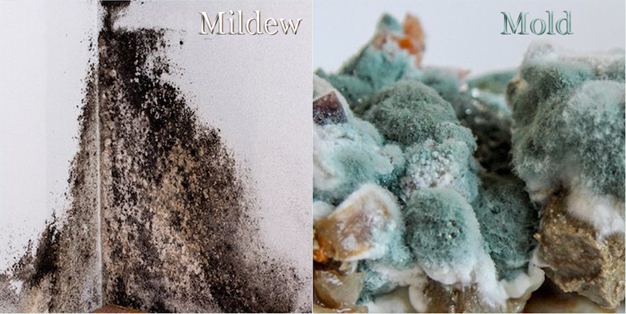
Mr. Answer Man Please Tell Us: What is the Difference Between Mold and Mildew?
Mold and mildew are both types of fungi that are commonly found in the home. They thrive in moist environments, spread easily, and live on various surfaces which makes them very difficult to get rid of. If left unattended, however, the harmful microorganisms can quickly affect large areas of your property and may even result in health problems and structural damage. While the two types of fungi share many common features, they pose different risks and respond to different treatment.
So, in order to come up with an efficient cleaning strategy and ensure the safety of your living environment, you need to understand the difference between mold and mildew.
Mildew can be described as a specific type of mold. Mold is a fungus that contains multiple identical nuclei and grows in the form of black or green patches which penetrate beneath the surface of the affected material. Mildew, on the other hand, has flat growth that remains on the surface where it can be easily removed. While mold usually grows on food or inside permanent structures, such as walls and crawl spaces, mildew is to be found on damp surfaces, paper, fabrics, and various organic materials in your home.

Common Mildew Types
Primarily, mildew is a plant disease that causes great damage to crops and plants. It is classified as powdery and downy:
Powdery mildew mainly affects flowering plants and first appears as white or gray patterned splotches that gradually become yellowish brown or black as the fungus grows;
Downy mildew is commonly found in agricultural products, such as grapes and potatoes. Its appearance varies depending on the type of surface it grows on, but usually downy mildew starts as yellow spots that eventually turn brown.
Common Mold Types
Although the number of mold species that can live indoors exceeds 10,000 according to the latest CDC estimates, most household molds belong to one of the following five types:
Alternaria grows on walls, in showers, around windows, under sinks and in various other damp places. It is often found in buildings that have suffered some kind of water damage. Alternaria mold can appear black, grey, or dark brown and has a wooly or down-like texture. Prolonged exposure to this kind of fungi can cause allergic reactions and asthma attacks;
Aspergillus is the most common type of mold found indoors. It can look grey, brown, yellow, green, white, or black. Aspergillus mold usually grows on walls, insulation, paper products, and clothing. It can causes allergic reactions and respiratory infections, as well as inflammation of the lungs in people with weak immune systems;
Cladosporium Unlike many other molds, this mold can grow in cool areas. It usually appears on fabrics, such as carpets or curtains, and on wood surfaces, like cabinets and floorboards. It has a characteristic black or olive-green color and can cause a variety of respiratory problems;
Penicillium can be found on various materials that have been in contact with water, including carpeting, wallpaper, insulation, and mattresses. It looks blue or green and produces strong musty odors. Penicillium spores spread very easily and often result in allergic reactions;
Stachybotrys chartarum often referred to as “black mold” because of its color, is the most dangerous kind of household mold – it produces toxic compounds called mycotoxins that can cause severe health problems, such as allergic symptoms, breathing problems, asthma attacks, chronic sinus infections, fatigue, and depression. The toxic black mold has a characteristic musty odor and usually grows in areas that are constantly damp - around leaky pipes, inside air conditioning ducts where there is a lot of condensation...

Differences between Mold and Mildew in Appearance
Typically, mold appears black or green while mildew looks gray or white. Yet, there are some more detailed specifics in the appearance of the fungi:
Mildew usually grows in a flat pattern and appears either powdery or fluffy. It can be easily identified as a patch of white, gray, or yellowish fungus that is lying on the surface of a moist area. Mildew usually turns black or brown over time;
Mold is usually fuzzy or slimy in appearance. It appears as irregularly shaped spots that can have different colors – blue, green, yellow, brown, gray, black, or white. Oftentimes, surfaces that are covered in mold begin to rot.
Differences in the Effects of Mold and Mildew
Both mold and mildew need to be taken care of in a quick and efficient manner as they can cause a lot of trouble over time:
Mildew usually affects plants and crops. If it develops indoors, however, it can also pose health risks. When inhaled, mildew spores cause coughing, headache, sore throat, and respiratory problems;
Mold can result in considerable structural damage when left unattended for a long time. Prolonged exposure can cause a variety of health problems, depending on the strain of mold. Common health effects of mold include various allergic reactions (sneezing, skin irritations, irritation of the eyes and throat, nasal congestion, etc.), respiratory problems (difficulty breathing, coughing, pneumonia, asthma attacks), heart problems, migraines, inflammation and pain in the joints, dizziness, depression, and extreme fatigue. The mycotoxins produced by black mold are particularly harmful and may have severe long-term health effects, especially in younger kids and individuals with weak immune systems.
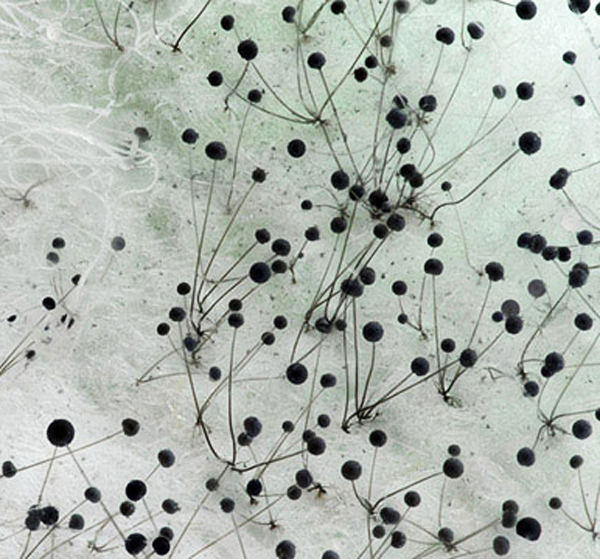
How to Prevent Mold and Mildew
The most efficient way to prevent mold and mildew in your home is to keep all the areas dry and moisture-free. Maintain a humidity level of about 40-50% inside the house (a dehumidifier provides the most advantageous solution for ensuring appropriate indoor humidity), have your heating and cooling systems regularly inspected, keep air ducts clean and in good condition, ensure good air circulation inside the premises, fix any leaks in the bathroom, kitchen or other areas, etc. Remove any mildew-affected plants and weeds as soon as you notice them in order to prevent mildew infestation.
How to Clean Mold and Mildew
Mildew is a surface fungus that can be efficiently treated with a commercially available cleaner and a scrubbing brush. Just make sure you work in a well-ventilated area and wear a facial mask to prevent inhaling mildew spores, as well as to avoid breathing in fumes given off by the cleaning product you use. It is also advisable to put on rubber gloves in order to protect your hands both from the mildew and from the cleaning agent. Clean all the surrounding areas carefully as well, to ensure that all the fungi have been successfully removed.
Mold, on the other hand, attaches to the affected materials with microscopic filaments that penetrate beneath the surface.
The mold spores spread very easily and can survive in extreme conditions, so they can quickly affect large areas of your property and result in permanent damage. Moreover, despite its characteristic musty smell, mold is only visible to the eye when the colonies start growing, so early detection and prevention is very difficult.
Worst of all,Mold can have a very negative impact on your health.
Live Science
• Mold Advisor
• Quora
• Restoration Master Finder.edu
• Mildew - Mold, Wikipedia
• What is the Difference Between Mold and Mildew? (YouTube Search) 

NAVSPEAK aka U.S. Navy Slang
Bulkhead: Wall.
Bulkhead remover: A fictional substance veteran sailors often task new sailors with getting, as a joke.
Bull, Bull Ensign: The seniormost Ensign onboard a surface ship, a submarine, or in an aviation squadron other than in the Training Command. This Ensign is charge of various wardroom duties, often including mentoring the juniormost Ensign (see “George”) and setting up the wardroom's movie night while at sea. Originated during World War II when Admiral “Bull” Halsey designated one officer to oversee wardroom functions.
Bull Nuke (Submarine Service): The senior most enlisted nuclear sailor, usually the Engineering Department Senior Enlisted Advisor.
Bullet Sponge: U.S. Marine.
Bully Big Dick: The USS Theodore Roosevelt (CVN-71). The name is a corruption of “Bully Big Stick”, the Roosevelt's shipboard news program.
Bumfuck, Egypt: Wall.
Bulkhead: The middle of nowhere; an out-of-the-way duty station.
Bun: A sexually active female sailor.
Burn (verb):
1. To smoke a cigarette.
2. As &“Burn a Copy”, To make a xerox copy of a document or sheet of paper.
Burn a flick (verb): To watch a film while underway..
Burn holes in the sky (verb): To fly monotonous patrol flights over a given area.
Burnbag:
1. One of the red-and-white-striped paper bags which are used to hold classified material meant for destruction.
2. An underperforming Cryptologic Technician or “CT” Shitbag.
Burn Run: An organized evolution to dispose of the material stored in burn bags.

Just for you MARINE
Bulkhead: A wall.
Bum Scoop: Bad information.
Burning Man: A Marine who is scorched by hot gun casings.
Bus Driver: Air Force pilot; so called because early USAF uniforms were said to resemble those of municipal streetcar officials.

Naval Aviation Squadron Nicknames
Fleet Air Reconnaissance Squadron 1 (VQ-1) - nicknamed the “World Watchers”
United States Navy - Fleet Air Reconnaissance, Naval Air Station Whidbey Island, Washington - Established June 1, 1955.

Where Did That Saying Come From?

“In Spades:” Meaning: In abundance; very much.
History: It's easy to believe that this expression derives from the imagery of digging with spades and that 'in spades' is just short for 'in spadefuls'. However, the spades concerned here aren't the garden tools but the suit of cards. Spades is the highest ranking suits in the game of Contract Bridge, a very popular pastime in the USA in the early 20th century, which is when and where the phrase originated.
Despite the agricultural-sounding name and the shovel-like shape, the suit in cards has nothing directly to do with garden spades. Playing Cards originated in Asia and spread across Europe around the 14th century, arriving in England a little later than in Spain, Italy and Germany.
The Italian versions of early cards used the suits Cups, Swords, Coins and Batons, which, on migration to England, became Hearts, Spades, Diamonds and Clubs. The image for Spades on English and French cards looks somewhat like that of the German Acorn or Leaf suits, but its origin is revealed by its name rather than its shape. The Spanish and Italian for sword is 'espada' and 'spada' respectively, hence the suit 'Swords' became anglicized as 'Spades'.
We have been 'calling a spade a spade' for many centuries, but the expression 'in spades' is a 20th century US coinage. The term was often used before that in relation to card games, where Bridge contracts might be entered into in the minor suits of Clubs or Diamonds or, for the higher scores, 'in Hearts' or, best of all, 'in Spades'.
The figurative meaning, that is, the non-cards-related 'very greatly' meaning, isn't found before the 1920s. The American journalist and writer Damon Runyon used the expression that way in a piece for Hearst's International magazine, in October 1929:
“I always hear the same thing about every bum on Broadway, male and female, including some I know are bums, in spades, right from taw.”
It isn't possible to be sure that the figurative 'in spades' derives from Bridge, but the coincidence of the time and place of the origin of the expression and the popularity of the card game certainly does suggest a connection.
See also: 'Grand Slam'
Phrases.org UK

Science & Technology

The Pentagon Is Declassifying Lots of Info About What's in Orbit
• Dancing Robot at Russian Event Turns Out to Be a Man in a Costume
• 20 Painting Secrets the Pros Won't Tell You
• The Shipwreck of One of America’s First Warships Was Just Found
• The Dracula Ant's Lightning Mandibles Make It the Fastest Animal in the World
• You Really Should Delete Your Google+ Account Right Now. But Here's Why It Probably Won't Matter.
• The 25 Best Christmas Movies
Popular Mechanics

Bizarre News (we couldn’t make up stuff this good – real news story)

Future Humans May Call Us the 'Chicken People,' and Here's Why
Long-lost cultures are sometimes known by the goods they leave behind. The Neolithic Corded Ware people of Europe, for example, got their name from the distinctive decorated pottery they made. If today's humans ever get a similar moniker, we might be known as the Chicken People.
Domesticated chickens, it turns out, could be a signpost for future archaeologists that screams, “Humans were here!” The total weight of the species Gallus gallus domesticus not only exceeds the weight of all wild birds combined, domesticated chickens also carry distinctive signs of industrialized farming in their very bones.
"They're an example, really, of how we've changed the biosphere to suit our needs as humans," said Carys Bennett, the lead author of a new study published in the journal Royal Society Open Science that argues that chicken-bone fossils may mark a new geological epoch, the Anthropocene. [7 Bizarre Ancient Cultures That History Forgot]

Chickens conquer the world
Bennett is a geologist, and she and her colleagues are interested in finding markers of a potential new era of geological history. The Anthropocene is a still-controversial epoch defined by humans as the major drivers of Earth's environment. One key requirement of an epoch, Bennett told Live Science, is having an “index fossil”. Index fossils are fossils that can be found around the world in a particular era and are unique enough to mark that period of time as different from what came before and after.
Chickens might just be that index fossil for the Anthropocene. The numbers tell the story: There are approximately 21.4 billion domesticated chickens alive on the planet today, making them by far the most numerous birds on the planet. Their combined weight, or biomass, is around 11 billion lbs. (5 billion kilograms). And chickens are found worldwide. Humans consumed an estimated 62 billion of them in 2014 alone.
Many chicken bones end up in landfills, Bennett and her colleagues wrote, which are oxygen-poor environments good for preserving organic matter. That means that chickens are quite likely to end up preserved in the fossil record.

Changing chickens
If future archaeologists do indeed find fossilized remains of today's chickens, they'll likely realize quickly that the creatures they've discovered weren't built by nature. Bennett and her team analyzed the leg bones of chickens from a database of animal bones that had been found in London. The bones dated back as far as the Roman Era, which began in A.D. 43. The earliest chickens were small, much like their wild ancestor, the red jungle fowl (Gallus gallus). Around the year 1340, the researchers found, domesticated chickens got a little heftier, likely the result of experiments in selective breeding at the time
Around 1950, though, chicken-bone measurements really started to change. The leg bone of a modern juvenile broiler chicken is three times as wide and two times as long as that of a wild red jungle fowl. A chicken today is a good four or five times larger than a chicken of the same species in 1957.
Today's monster chickens are no accident; they are the result of a 1948 supermarket competition called the “Chicken of Tomorrow” that called on breeders to make bigger, faster-growing fowl. Today's broiler chickens grow so rapidly that their bones are more porous than their wild counterparts. They are typically slaughtered by 7 weeks of age and don't survive well if allowed to grow larger, Bennett and her colleagues wrote.
Future geochemists will also be able to detect the grain-based diets of today's chickens in the molecules that build their bones, Bennett said. And if they can sequence any DNA from chicken-bone fossils, they'll find variations in some genes, such as a mutation that allows domesticated chickens to mate year-round rather than seasonally.
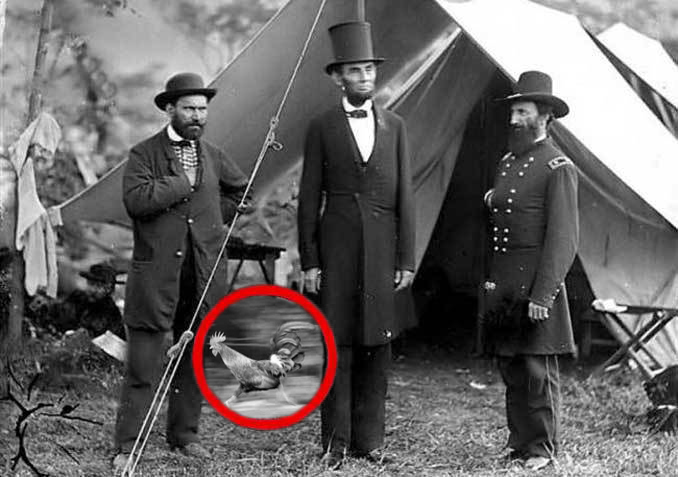
The International Commission on Stratigraphy, which is made up of a group of scientists from around the world, is responsible for defining periods, epochs and ages that researchers use to understand Earth's history. The Anthropocene has yet to be officially adopted, Bennett said, and the process is likely to take years. There are signs, however, that the Anthropocene may well be visible in the rock record for millennia. Scientists in 2014, for example, reported a new “rock”, plastiglomerate, or a mix of lava and melted plastic found on some beaches. Researchers have also argued that sediments will hold other telltale signs of industrialized society, including lead from leaded gasoline, byproducts from the burning of fossil fuels and nitrogen from fertilizers. Chickens could join this mix, Bennett said.
“As the population of chickens is going up, so is the human population, so is the amount of plastic we're using, the amount of fossil fuels we're burning”, she said. “So the timing fits in pretty well with what scientists are looking at as the boundary of the Anthropocene, which would be 1950.”
Live Science (12/12/2018) 


SONG FACTS

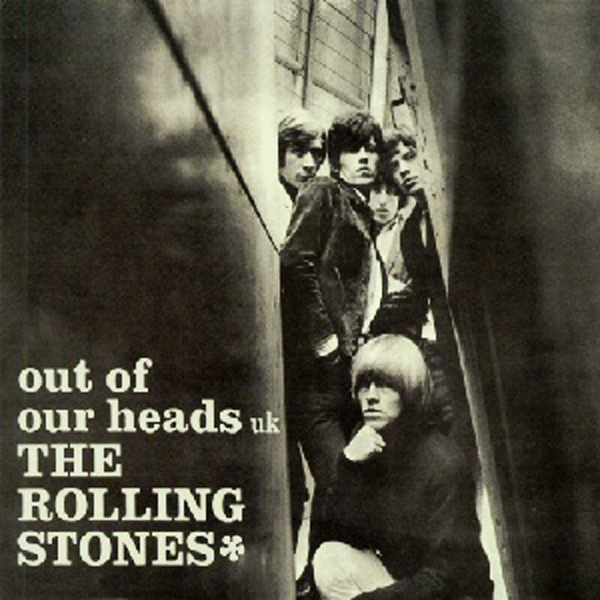
“Bitter Sweet Symphony” - The Verve
Album: Urban Hymns
Released 1989 
Famous Cases of Alleged Music Plagiarism
The Verve vs. The Rolling Stones (1997)
The Verve “Bitter Sweet Symphony” 
Written by Mick Jagger, Keith Richards “The Last Time”)  - (sung by The Rolling Stones (1964)
- (sung by The Rolling Stones (1964)
Nothing really comes from scratch anymore, and music is no exception. The first thing bands talk about when they form are their influences, and they typically start off by (and never really stop) playing other people’s music.
Entire genres, like folk, blues, and hip-hop, are based upon liberal borrowing out of either tradition or necessity. Simply put, every artist you love, no matter how unique, innovative, and game changing they may be, stands on the proverbial shoulders of giants.
With that in mind, famous instances of alleged music plagiarism. Some cases went to court. Others got shrugged off. Sometimes we think we’re listening to the same song twice. Other times we just don’t hear it that way.
The Case: The Verve had a major smash with their dreamy “Bittersweet Symphony”. Vocalist Richard Ashcroft penned the song's lyrics, but the instrumental backing was partially sampled from a symphonic version of the Rolling Stones' song “The Last Time”, recorded in 1965 by the Andrew Oldham Orchestra.
The band had originally agreed to license a five-note segment of the recording in exchange for 50 percent of the royalties, but former Rolling Stones' manager Allen Klein claimed the Verve voided the agreement by using a larger section than they agreed to use. ABKCO Records, Klein's holding company, filed a plagiarism suit on behalf of himself and “The Last Time” songwriters Mick Jagger and Keith Richards.
The Verdict: The Verve forfeited all of the songwriting royalties and publishing rights to ABKCO, and the song credit reverted to Mick Jagger and Keith Richards. “We were told it was going to be a 50/50 split”, recalled Verve bassist Simon Jones. “Then they saw how well the record was doing. They rung up and said we want 100 percent or take it out of the shops, you don't have much choice.”
Andrew Loog Oldham, another former Stones manager who owned the actual recording that was sampled, sued the band in 1999 for $1.7 million in mechanical royalties. In the end, the Verve lost all control of their biggest hit. It was used in a Nike commercial against their wishes, earning them no money and crushing their sense of artistic integrity. “I'm still sick about it”, Ashcroft said in later years. The final insult came when “Bittersweet Symphony” was nominated for a “Best Song” Grammy - with Mick Jagger and Keith Richards named on the ballot.
Why It Matters: The saga of “Bittersweet Symphony” can either be viewed as a cautionary tale or one of the most unjust chapters in musical copyright history. Though the Verve sampled a cover of a Rolling Stones' song, it was a portion written by orchestra arranger David Whitaker - who was not credited on any of the recordings.
Lead singer Richard Ashcroft wrote the lyrics, which are a somber look at the ennui of everyday life: “You're a slave to money, then you die.”
At this point in his career, Ashcroft had learned that money and happiness were not synonymous. “People have been sold a lottery dream in life that money solves everyone's problems”, he said. “Suddenly you're looking at people and you're thinking: 'I know they need X but if I give X then that relationship that should have died years ago is going to carry on and spoil.' It opens up a myriad of things that you would never normally be thinking about, responsibilities on a new level.”
The famous orchestral riff incorporates a sample from an obscure instrumental version of the 1965 Rolling Stones song “The Last Time”  by Stones producer Andrew Loog Oldham, who included it on a 1966 album called The Rolling Stones Songbook (credited to The Andrew Oldham Orchestra). The Verve got permission to use the six-second sample from Decca Records, which owned the Oldham recording, but they also needed permission from the publisher of “The Last Time”, something they didn't realize until after the album was completed.
by Stones producer Andrew Loog Oldham, who included it on a 1966 album called The Rolling Stones Songbook (credited to The Andrew Oldham Orchestra). The Verve got permission to use the six-second sample from Decca Records, which owned the Oldham recording, but they also needed permission from the publisher of “The Last Time”, something they didn't realize until after the album was completed.
So, with Urban Hymns ready to go and “Bitter Sweet Symphony” slated as the first single, Verve manager Jazz Summers tried to secure those rights, which belonged to Allen Klein's company ABKCO. The Rolling Stones signed a very lopsided contract with Klein, who was their manager, early in their career, and had to make huge concessions in order to get out of it. Part of the deal gave Klein the publishing rights to all of the Stones' songs they recorded through 1969.
In the book Allen Klein: The Man Who Bailed Out the Beatles, Made the Stones, and Transformed Rock & Roll, it states that Summers offered Klein 15% of the publishing to obtain the rights. Klein turned him down flat, and when he realized that the Verve were sitting on a hit record they couldn't release without a deal, he insisted on 100% of the publishing. The Verve gave in, since they really had no choice. Richard Ashcroft, who wrote the lyric, was given a flat fee of $1,000 and had to sign away his rights. “I was put under duress to sign away one of the greatest songs of all time”, he said.
The end result was Klein making an enormous profit on the song every time it was purchased or used in a TV show, movie or commercial.
“Try to make ends meet, you're a slave to money, then you die.”
Ashcroft's father, Frank, was an office clerk, a dissatisfying job that earned him enough to get by. He died suddenly of a brain hemorrhage in 1982 when Richard was 11 and his sisters, Victoria and Laura, were very young.
“He worked nine to five and got nowhere“, Ashcroft said. “I immediately realized that wasn't the life for me.”
The sample used in this song is one of many layers that make up the track. The opening section of the song isn't a sample - it was arranged by Wil Malone - although it was based on those notes.
Nike used this in commercials as part of their 1998 “I Can” campaign, showing everyday athletes practicing with determination. The Verve were dead set against using their songs in commercials, but they didn't control the publishing rights to this song: Allen Klein's ABKCO company did. When ABKCO authorized the song, it gave Nike the right to re-record it with other musicians, so The Verve agreed to let their original recording be used so that wouldn't happen.
Lyrically, the song stands in stark opposition to the sneaker-selling corporate monolith, but Nike used just the instrumental portion, which was in high demand, as Coca-Cola, Budweiser, and other big companies were vying to use it.
The Verve were reportedly paid $175,000, with ABKCO receiving much more. The group donated the money to the Red Cross Land Mine Appeal.
Details of the legal tussle surrounding this song aren't clear-cut, as there was no court case to get it on record. It appears that David Whitaker, who did the string arrangement on the orchestral version of “The Last Time” that was sampled, got nothing. Andrew Loog Oldham, who produced that version, got in on the action after “Bitter Sweet Symphony” was released, and it's unclear if he got a settlement.
As for the publishing rights to the “The Last Time”, those were administrated by ABKCO, but Allen Klein apparently was not the sole owner. According to an article in Mojo magazine, Klein got 9/24ths of the publishing, Mick Jagger and Keith Richards split 9/24ths, and 3/24ths went to Westminster Publishing, who were the Stones publishers early on. The takeaway here is that Jagger and Richards profited from the deal in a big way, which explains why they never had much to say about the lawsuit.
Another wrinkle: “The Last Time⌋ is very similar to a 1955 song by The Staple Singers called “This May Be The Last Time”  but The Stones claimed it as their own.
but The Stones claimed it as their own.
The Verve, official website / Rolling Stone / COS /
Billboard / All Music / Song Facts / The Verve
Image: “Urban Hymns (album)” by The Verve

Trivia
● What unit of distance is equal to 1.85 kilometers?
Answer to Trivia
● Milk turns sour when what sugar in the milk is devoured by bacteria?
Answer to Trivia
● How long is the Great Wall of China? Closer to 100 miles, 500 miles, or 1,500 miles?
Answer to Trivia
● Let's say a quarter, 25 cents, has the same weight as two pennies. If a kilogram of quarters is worth $50, then what is a kilogram of pennies worth?”
Answer to Trivia

A Test for People Who Know Everything
From the Jeopardy Archives Category - “ELEMENTAL WORDS” ($200) (Alex: Each correct response begins with the name of a chemical element...)
“Adjective for a statement meant to convey the opposite of its literal meaning.”
● Answer for People Who Do Not Know Everything, or Want to Verify Their Answer Merriam Webster
From the Jeopardy Archives Category - “ELEMENTAL WORDS” ($400) (Alex: Each correct response begins with the name of a chemical element...)
“A car driver who habitually puts the pedal to the metal.”
● Answer for People Who Do Not Know Everything, or Want to Verify Their Answer Quora
From the Jeopardy Archives Category - “ELEMENTAL WORDS” ($1,000) (Alex: Each correct response begins with the name of a chemical element...)
“The sailors led by Jason in quest of the golden fleece.”
● Answer for People Who Do Not Know Everything, or Want to Verify Their Answer Gray Wolf Press.org
Answer to Last Week's Test
From the Jeopardy Archives Category - “IN ABSENTIA” ($200) (Alex: ....each correct response will be formed from some of the letters, the eight letters in the word "absentia".)
“To put your money into a poker pot.”
● Answer: Bet or Ante. Quora
From the Jeopardy Archives Category - “ALL IN A DAY'S WORK” ($400):
“Let's get out of here before the boss asks us to work this, exemptions from which are listed in the FLSA.”
● Answer: Sane. Cambridge Dictionary.org
From the Jeopardy Archives Category - “IN ABSENTIA” ($600) (Alex: ....each correct response will be formed from some of the letters, the eight letters in the word "absentia".)
“Prejudice.”
● Answer: Bias. Psychology Today

Joke of the Day
“3 Axle 32 foot Gooseneck With Tire Trouble”

“Two Friends Rented A Boat”

Two Friends Rented A Boat
Two friends rented a boat and fished in a lake every day. One day they caught 30 fish. One guy said to his friend,
“Mark this spot so that we can come back here again tomorrow.”
The next day, when they were driving to rent the boat, the same guy asked his friend, “Did you mark that spot?
His friend replied, “Yeah, I put a big 'X' on the bottom of the boat.”
The first one said, “You stupid fool! What if we don't get that same boat today!?!?”








































